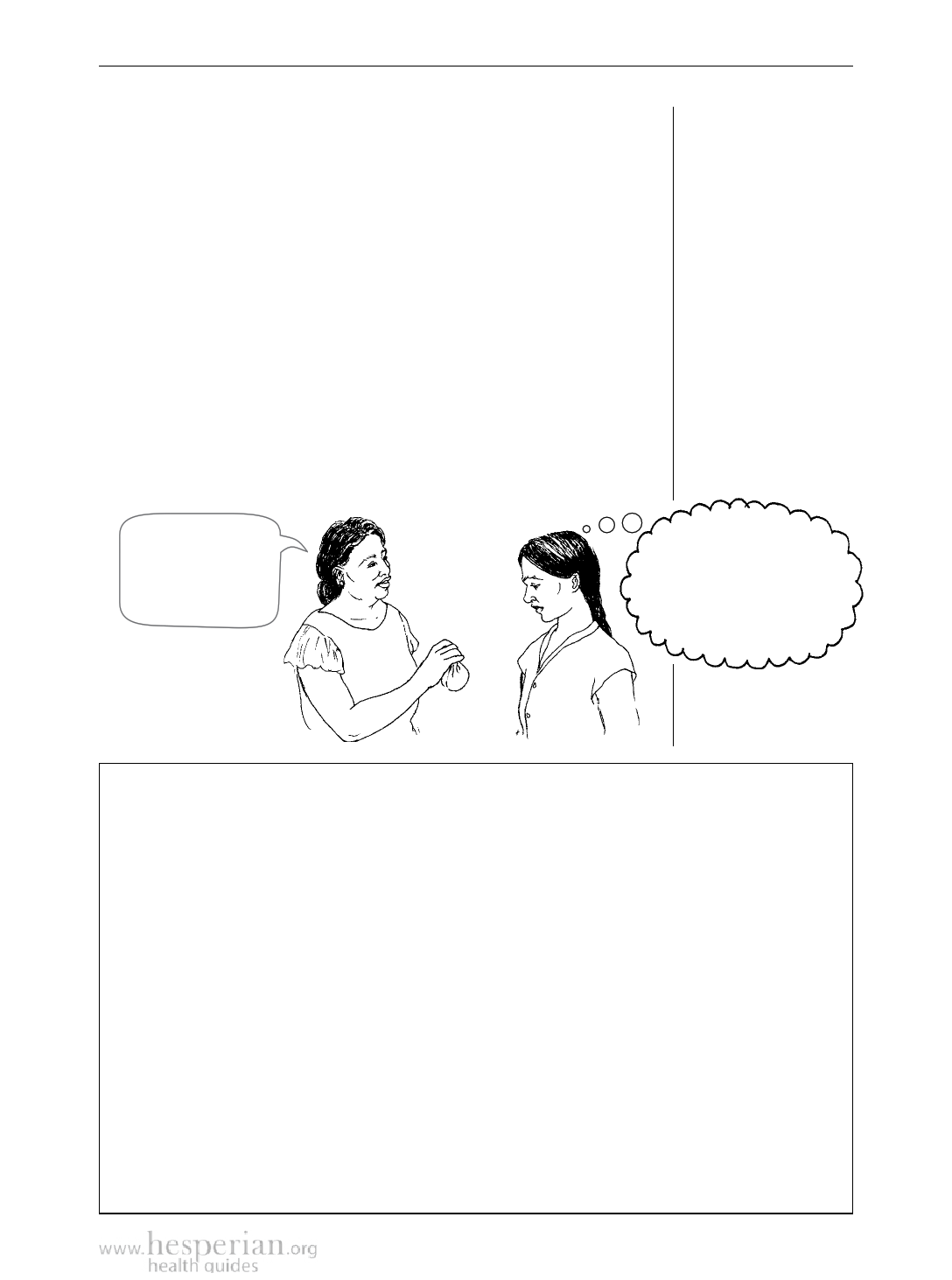
What Is the Best Treatment? 23
Don Pedro told Juanita that she could learn about a particular
treatment and how well it works by talking to many different
people who have used it. Here are some questions to ask:
• Why do you use this method?
• When do you use it?
• How do you use it?
• What happens when you use it?
• How often does it help the problem?
• Do things ever go wrong?
Think carefully about what different people say about
treatments they have used. Then, when you try a remedy
yourself, pay attention to what happens to your signs to see
if the remedy helps you. Be careful about trying too many
remedies at once.
This helped
Maria del
Carmen, so it
may help you,
too.
But Maria del Carmen
had pains after
childbirth, not while
passing urine. So this
remedy may not help
me at all.
To decide if a treatment will be helpful, harmless, or harmful, learn all you can
about it first. If you are still unsure whether a treatment is harmless or harmful,
consider these things:
1. The more remedies there are for any one illness, the less likely it is that any
of them works.
2. Foul or disgusting remedies are not likely to help—and are often harmful.
3. Remedies that use animal or human waste do no good, and often cause
dangerous infections. Never use them.
4. The more a remedy resembles the sickness it is said to cure, the more likely
that its benefits come only from the power of belief. For example, a red
plant will not necessarily stop bleeding.
5. Methods that deny people food, exercise, or rest usually make them weaker,
not stronger.
6. Methods that blame people for their problems usually add to their suffering
and pain.
Where Women Have No Doctor 2012